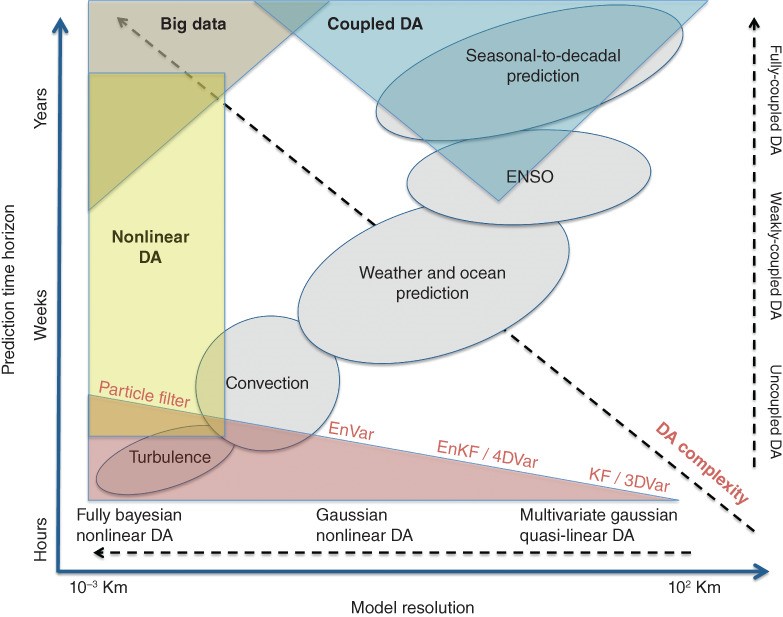We commonly refer to state estimation theory in geosciences as data assimilation (DA). This term encompasses the entire sequence of operations that, starting from the observations of a system, and from additional statistical and dynamical information (such as a dynamical evolution model), provides an estimate of its state. DA is standard practice in numerical weather prediction, but its application is becoming widespread in many other areas of climate, atmosphere, ocean, and environment modeling; in all circumstances where one intends to estimate the state of a large dynamical system based on limited information. While the complexity of DA, and of the methods thereof, stands on its interdisciplinary nature across statistics, dynamical systems, and numerical optimization, when applied to geosciences, an additional difficulty arises by the continually increasing sophistication of the environmental models.
Our group works on both the theoretical development of novel DA methods, at the crossroad between applied mathematics, dynamical systems, and machine learning, as well as their application to an ample range of applications in the climate science area. The latter includes, but are not limited to, meteorology, hydrology, sea-ice, and ocean.
